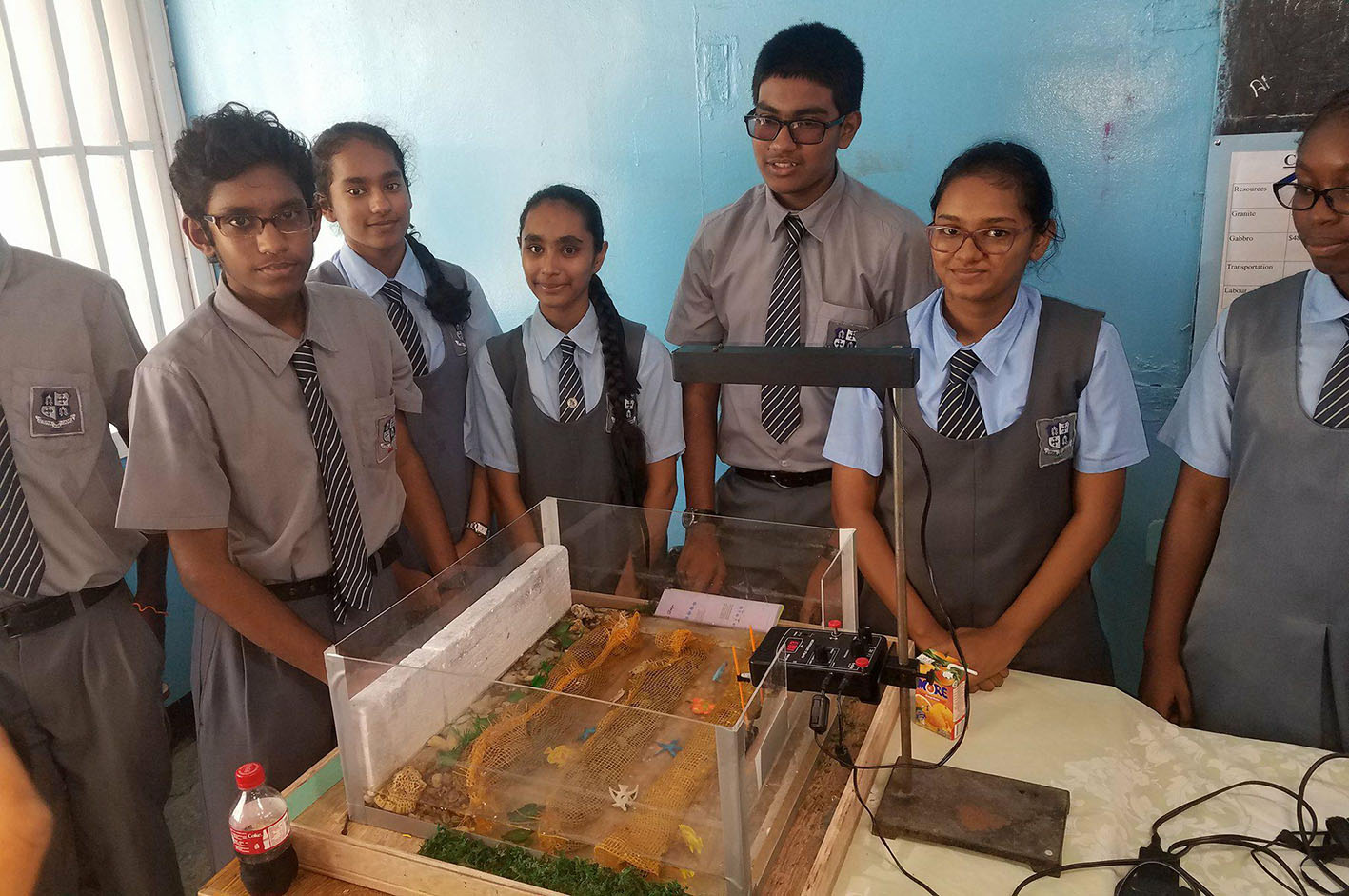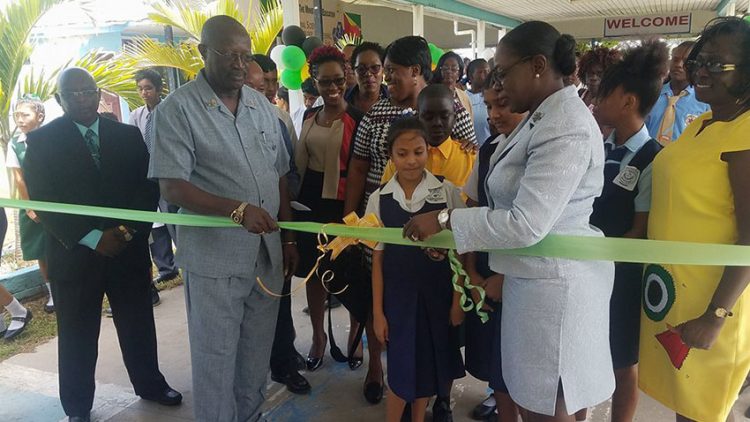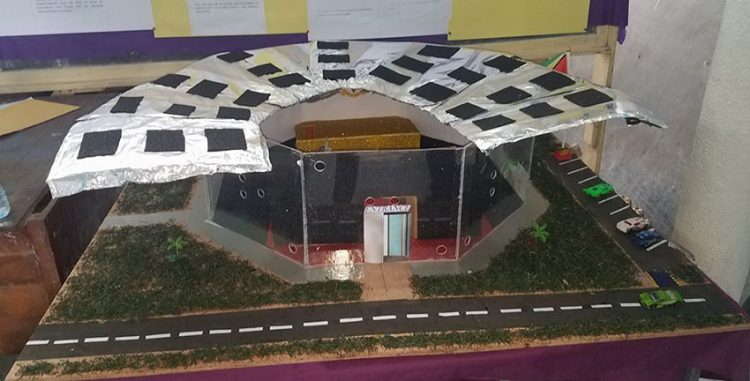Educators can use the STEAM fair to bring forward the right kind of ideas and innovation to provide a boost to a critical sector of the education system, Minister of Education Nicolette Henry declared yesterday.
The minister was at the time giving the feature address at the opening ceremony of the 14th National Biennial Science, Technology, Engineering, Arts and Mathematics (STEAM) Fair at the St Joseph High School, Woolford Avenue, Georgetown.
“What is more incredible is the inclusion of Arts into this year’s science fair. The movement from STEM to STEAM, by adding arts to the technical creativity is the foundation for advancement in all fields. Right here, ladies and gentlemen, could be the idea that spawns a new ministry, the next lucrative, innovative creation that may form part of the country’s green and sustainable plan [and] for this reason, the fair is a continuous aspect of Guyana’ s educational programme,” the minister said.
The STEAM fair aims to popularise science, technology, engineering, arts and mathematics in schools, and in the wider society. All ten regions had hosted their own regional fair, and the winners of the different categories in each region had their projects on display at the national fair yesterday. The thirty- odd projects, which range from food ideas to farming to construction, were presented by the various schools and will be judged over a three-day period by fourteen judges.
St. Stanislaus College’s entry is titled “Walls of Stone” and the students explained that they came up with the idea for their project by visualising the problem.
“Guyana is below sea level and there are very destructive waves. What we propose to do is put boulders into the ocean to slow down the waves, so by the time it reaches the seawall there is less impact. And the seawall wouldn’t break up or erode. As the waves climb over each boulder, it would lose its energy, so it wouldn’t be able to carry that weight anymore,” Davina Jettoo, one of the team members on the project, explained. Along with seven other students, Rachel Cecil, Raeda Persaud, Lakshmi Narine, Arantxa English, Aatif Khan, Anish Soekdeo, Adrian Connelly, and their teacher, they came up with the idea for the project which took about a month to create.
St Ignatius Secondary, from Region Nine, is presenting a project called the Mango and Beef Blaster. The main aim of their project is to reduce the wastage of mangoes and provide local job opportunities. “We came up with this snack because we know it would be very nutritious to people consuming them, unlike junk food, knowing that the mango contains vitamins A and B,” Fabiola Rodriguez explained. Fabiola and her colleague Nicola James, originators of the snack gathered mango and beef, which were then sliced, salted and solar dried for two days. The two students were excited to present their novel snack idea.
President’s College took another route and presented a model for an auditorium which can be powered by nature. Their project is called “The Utopian Auditorium Powered by Nature”.
“Like many other schools President’s College hosts a lot of events, but we don’t have a specific place to host events,” Sudesh Narine told this newspaper. The projected size of the auditorium would be 5600 square meters and octagonal in shape, so as to be aesthetically pleasing. The proposed structure would have a permanent seating for at least 1500 persons, an indoor basketball court and a stage, and would be powered by solar panels.
Sudesh, who was very excited to present the model, stated that they came up with the idea for the project as they saw a need for an auditorium at the school. The students’ cost analysis for building the auditorium is $250,000,000. However, if the auditorium is built with the students’ green engineering concepts, which include the use of solar panels, biodegradable materials, and recyclable waste to fill the land and set the foundation, the projected cost would be reduced to $150,000,000.
Two students, Nandanie Achaibar and Shevion Franklin from the Annandale Secondary School were positive that they would win with their “Aquaponics” entry. They explained that during the rainy season, at school it was hard for them to grow crops and they decided to come up with a system which can be used to plant crops any time of the year. The project took the students three weeks to put together.
The STEAM fair continues today and tomorrow, when a winner will be announced. It is open to the public from 10:00hrs and admission is free. (Shamar Meusa)








